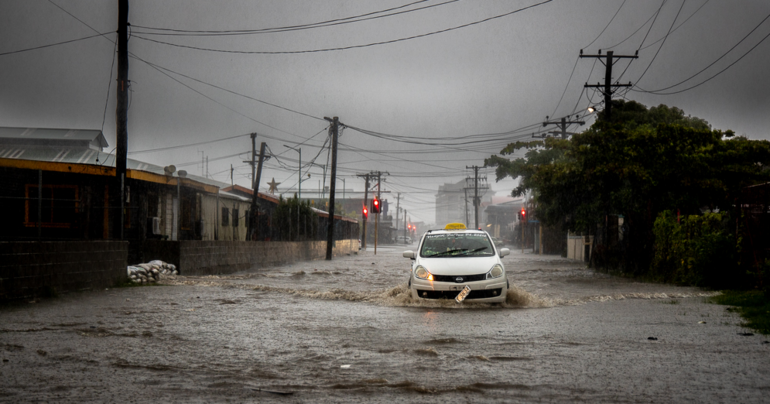So you’ve ruptured your Achilles tendon
Talofa Samoa and welcome back to your weekly Physiotherapy column! Today’s column comes to you from PHYX Physio & Pilates in Australia and covers Achilles’ tendon ruptures.
If your Achilles tendon ruptures, you may hear a ‘pop’ sound and feel an immediate sharp pain in the back of your heel and lower leg which is likely to affect your ability to walk. As physios, we often hear that it feels like you’ve been kicked in the back of your ankle at the time of the rupture.
What Is an Achilles tendon rupture and what causes it?
The Achilles tendon is a strong fibrous cord that connects the calf muscles to the heel bone, it is the longest and strongest tendon in the human body.
This tendon helps to facilitate walking by raising the heel off the ground and when your Achilles tendon snaps, it is known as Achilles tendon rupture.
The Achilles tendon is the most commonly ruptured tendon in the human body. A tendon rupture is a complete tear that occurs when the Achilles tendon is stretched beyond its capability.
There are four main causes of an Achilles Tendon rupture:
1. Sudden forceful movement of the foot against resistance, such as when you push off with great force to jump. Forceful jumping, pivoting, or sudden acceleration with running can overstretch the tendon and cause a rupture. These injuries often occur in sports including basketball, tennis, football, soccer, netball, baseball, softball, badminton, etc.
2. An injury to the tendon can also result from tripping or falling – when the footsteps forcefully end up in front to break a fall.
3. Less commonly, medications such as steroids, may weaken the tendon and contribute to ruptures.
4. Another risk factor for Achilles tendon rupture is poorly managed tendinopathy.
Signs And Symptoms Of An Achilles Tendon Rupture
• Sudden pain (which feels like a kick or a stab) in the back of the heel or calf.
• A popping or snapping sound when the injury occurs.
• Swelling at the back of the leg and the heel.
• Difficulty with walking to ‘push off’ the injured leg.
• Difficulty rising up on the toes of the injured leg.
• Difficulty with bending the foot, pointing the toes downwards.
How is an Achilles rupture diagnosed?
Diagnosis of an Achilles tendon rupture is usually quite straightforward and easily diagnosed by your doctor or physio.
1. Examine the lower leg, foot and ankle for swelling, bruising and tenderness and if there is a complete rupture of the Achilles tendon, a defect or gap in the tendon may be palpated.
2. Your range of motion will be observed and a number of tests carried out to help confirm the diagnosis.
3. In some cases, an MRI or other imaging test may be used to diagnose an Achilles tendon rupture.
How to treat an Achilles rupture
In previous times, most ruptures were repaired surgically, however in more and more cases nowadays, we see the patient conservatively managed in a moon boot for 10-12 weeks. Your orthopedic surgeon is the person who will direct your management and if surgical or non-surgical intervention is warranted.
The decision of whether to follow a surgical or nonsurgical treatment is based on the severity of the rupture and the individual’s health and activity level.
Surgical: Different surgical techniques are available to repair Achilles tendon ruptures. A surgeon will select the procedure best suited to the individual. Following surgery, depending on the surgeons protocol, a cast or walking boot will be worn.
Non-surgical: Conservative treatment may be appropriate for some individuals and may be used in cases with minor ruptures, less active individuals, older individuals, or those with higher risk for undergoing surgery. This may involve the use of a cast, walking boot or brace to restrict movement and allow the torn tendon to heal.
Whether an Achilles tendon rupture is treated surgically or conservatively, physiotherapy is an important component of the rehabilitation process. Physiotherapy will involve exercises to strengthen muscles, improve range of motion in the foot and ankle and return you to activity and sport.
Prevention
To reduce your chance of Achilles tendon issues and prevent injury:
- Stretch calf muscles to increase flexibility
- Strengthen calf muscles
- Wear appropriate footwear
- Increase training intensity slowly – Achilles tendon injuries commonly occur after an abrupt increase in training intensity or frequency
If calf or heel pain occurs, consider stopping your activity and if rest does not help/ the pain reoccurs, seek medical advice.
• The author is a physiotherapist and can be contacted on telephone 28303 at Alec’s Health Specialist Centre should you need more information.
Tags











